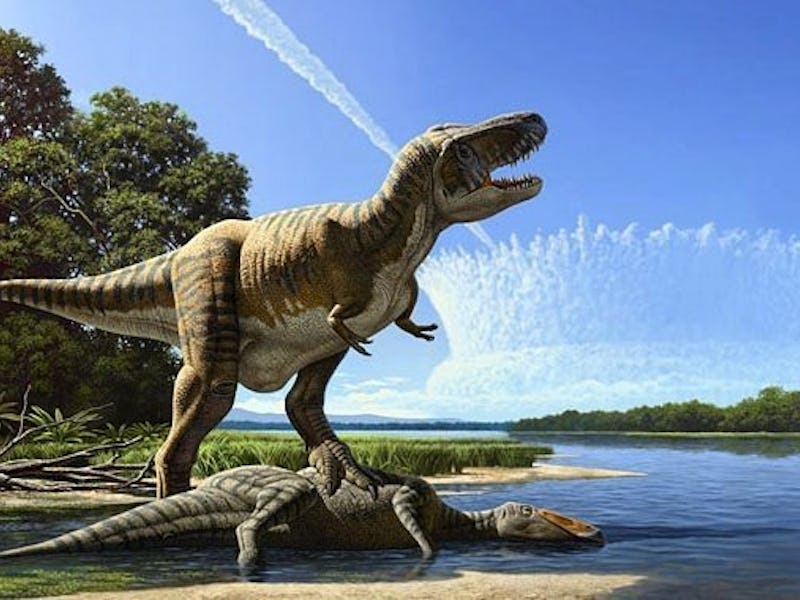Scientists Will Drill Into the Crater Created by Dinosaur-Killing Asteroid
A fishing expedition unlike any other.

There’s no such thing as a good day when an asteroid strikes a planet full of life, but this month, one historic impact from the past will fill a number of gaps in our scientific knowledge.
Some 66 million years ago, a fated asteroid landed in the Gulf of Mexico, kicking up enough dust to block out the sun while simultaneously wreaking tectonic havoc on our planet’s geology. In the following time, some 90 percent of the living things on Earth died. Most notably, the dinosaurs were among them. Nowadays we see the effects of this humongous impact as a 180-kilometer-wide crater rim in the Gulf of Mexico.
This month, scientists from University of Texas, Austin and Purdue University will spend three weeks at sea, drilling into this crater to see what they can learn.
On land, their base is Chicxulub, Mexico, but their time on the water will be spent aboard a boat with three integrated stilts to make it into a stable drilling platform. All told, scientists will be drilling 1,500 meters into the crater, pulling out three-meter cores for closer examination every step of the way.
Jay Melosh is a planetary scientist who helped develop a model for how the crater’s rings formed, and he tells us his speciality is “geological violence.” He is especially interested in the topographical features that appear when one heavenly body smacks into another. He helped develop a model to explain how the Chicxulub crater may have formed, and researchers will be able to confirm this model if they find rocks “out of order,” with older rocks lying on top of younger rocks within the crater.
The location of Chicxulub, Mexico.
“Big craters on the moon and other planets of a certain size have rings a few hundred kilometers in diameter with a ring of mountains around the center,” Melosh tells Inverse. “Chicxulub is maybe the only crater on Earth big enough to preserve that inner ring.”
Beyond informing us of how planetary mountain ranges are formed, researchers have questions around potential life forms that the crater might have played host to while surface animals were going extinct on land. As they drill, they’ll be monitoring for microbial life and microfossils that point to creatures that used to be there.
It nearly extinguished life on our planet, but we’ll soon know if the crater from the Chicxulub meteor might also have played a role in restoring life at the same time.